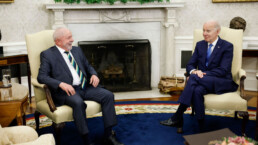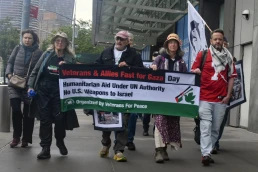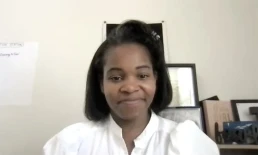Brazilian president Lula da Silva knows the dangers of the far right all too well, and during his visit to the US last week he laid out exactly how to defeat such reactionaries: not by striving for a false unity but by confronting the foes of democracy head-on.
by Craig Johnson, Jacobin
Last Friday, two American leaders who faced would-be coup attempts, US president Joe Biden and Brazilian president Luiz Inácio Lula da Silva, met in Washington, DC. The pair of presidents traded the usual pleasantries of diplomatic visits, but it was the Latin American visitor who was trying to teach the US president how to deal with an insurrection.
This was not Lula’s first time visiting the US capital, but it was the first since he defeated Jair Bolsonaro in last year’s Brazilian elections. Lula met with progressive members of Congress, including Senator Bernie Sanders and Representative Alexandria Ocasio-Cortez, as well as the president of the AFL-CIO. The climate change and pro-worker rhetoric of Lula’s visit shined through in these meetings, with reporters asking him about Brazil’s plans to protect the Amazon and both Sanders and Ocasio-Cortez praising his commitment to labor rights. With Lula, Brazil will again become a leader in these fields.

But the key reason for Lula’s visit was the January 8 insurrection in Brazil — Biden invited him to visit the United States the day after Bolsonaro’s supporters stormed the Brazilian capital. This was no typical meeting, and Lula knew it. It was an opportunity to show people in the United States how to deal with the far right.
Lula demonstrated this most clearly in his conversation with CNN’s Christiane Amanpour, the highest-profile interview he gave while on US soil. Amanpour asked about Lula’s political intentions, his stance on the Russian invasion of Ukraine, and the Amazon, but the first half of their conversation focused on the state of democracy in Brazil. She presented her questions as a challenge to President Lula, arguing that “Brazil is divided. . . . half the country loves you and half the country hates you,” and suggested that “unifying Brazil is the key to protecting democracy.”
Recent Posts
These Veterans Starved Themselves To Protest The War In Gaza
July 8, 2025
Take Action Now As food in Gaza becomes increasingly scarce, activists are pushing their bodies to the limit in solidarity.By Emmet Fraizer, The…
ICE Agents Are Terrorizing Los Angeles With Brutal Tactics
July 8, 2025
Take Action Now ICE agents have established a pattern of brutal use of force in immigration raids.By Jonah Valdez, The InterceptSince June 6,…
Talk World Radio: India Walton On Zohran Mamdani And Freezing Out ICE
July 7, 2025
Take Action Now India Walton, former Democrat nominee for mayor of Buffalo, NY, discusses Zohran Mamdani and the race for NYC mayor and how to deal…
How Climate Change Is Worsening Flooding And Heavy Rainfall
July 7, 2025
Take Action Now The latest science on the link between climate change and natural disasters — and how they may be playing out where you live.By…




